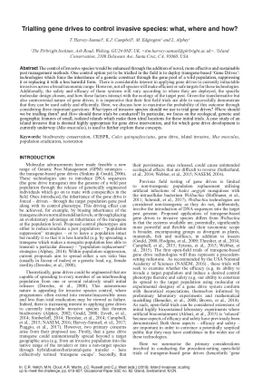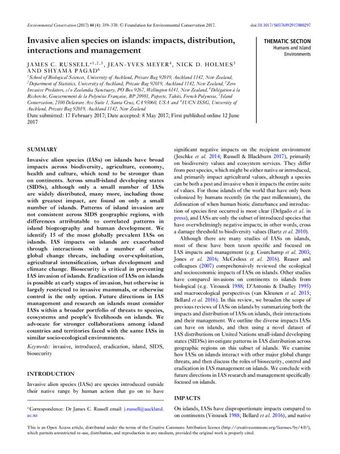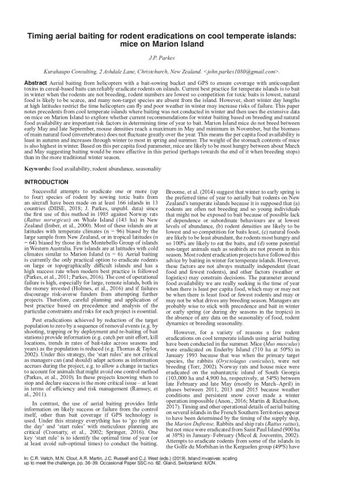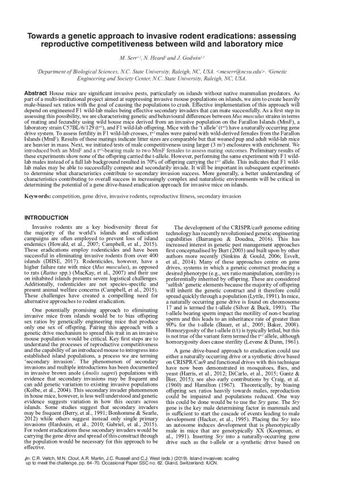Trialling gene drives to control invasive species: what, where and how?
- Description:
- The control of invasive species would be enhanced through the addition of novel, more effective and sustainable pest management methods. One control option yet to be trialled in the field is to deploy transgene-based Gene Drives: technologies which force the inheritance of a genetic construct through the gene pool of a wild population, suppressing it or replacing it with a less harmful form. There is considerable interest in applying gene drives to currently intractable invasives across a broad taxonomic range. However, not all species will make efficient or safe targets for these technologies. Additionally, the safety and efficacy of these systems will vary according to where they are deployed, the specific molecular design chosen, and how these factors interact with the ecology of the target pest. Given the transformative but also controversial nature of gene drives, it is imperative that their first field trials are able to successfully demonstrate that they can be used safely and efficiently. Here, we discuss how to maximise the probability of this outcome through considering three important questions: What types of invasive species should we use to trial gene drives? Where should we be trialling them? and How should these trials be conducted? In particular, we focus on the ecological, genetic and geographic features of small, isolated islands which make them ideal locations for these initial trials. A case study of an island invasive that is deemed highly appropriate for gene drive intervention, and for which gene drive development is currently underway (Mus musculus), is used to further explore these concepts
- Display date:
- 2019
- Collections:
- Secretariat of the Pacific Regional Environment Programme (SPREP)
- Publisher:
- International Union for Nature Conservation (IUCN)
- Content partner:
- Secretariat of the Pacific Regional Environment Programme (SPREP)
- Availability:
- Not specified
-
Copyright status: All rights reservedFind out more about what you are able to do with this itemThis item is all rights reserved, with means you'll have to get permission from Secretariat of the Pacific Regional Environment Programme (SPREP) before using it. For more information, please see our use and reuse page.What can I do with this item?Non-infringing useNZ copyright law does not prevent every use of a copyright work, and this item may be hosted by an international institute or organisation. You should consider what you can and cannot do with a copyright work.No sharingYou may not copy and/or share this item with others without further permission. This includes posting it on your blog, using it in a presentation, or any other public use.No modifyingYou are not allowed to adapt or remix this item into any other works.No commercial useYou may not use this item commercially.
Related items
Welcome and warm Pasifik greetings
The information on this site has been gathered from our content partners.
The names, terms, and labels that we present on the site may contain images or voices of deceased persons and may also reflect the bias, norms, and perspective of the period of time in which they were created. We accept that these may not be appropriate today.
If you have any concerns or questions about an item, please contact us.



